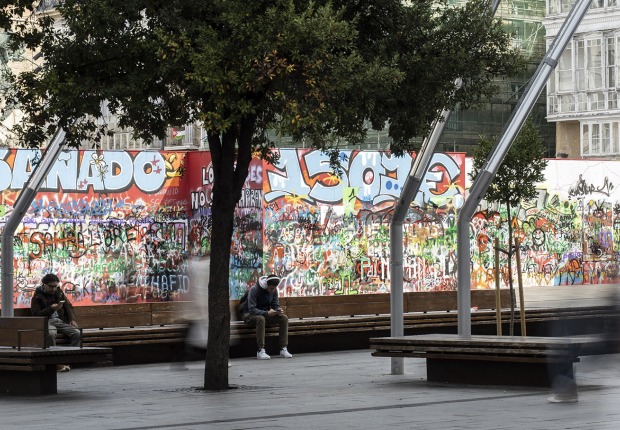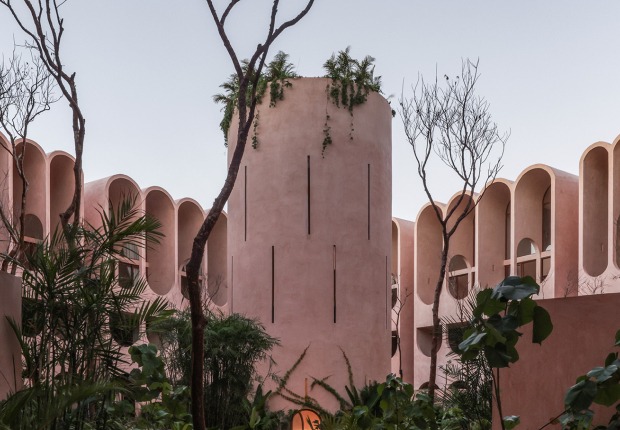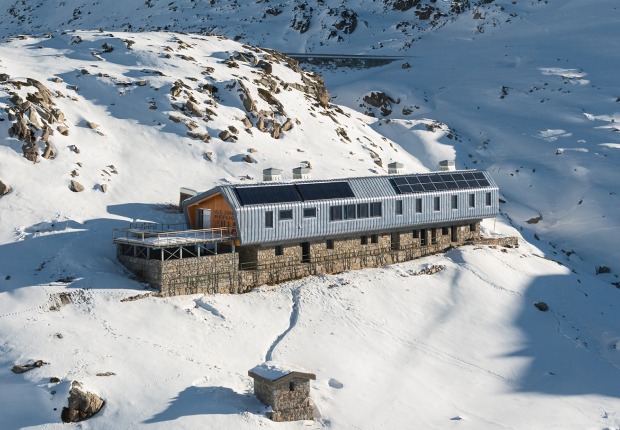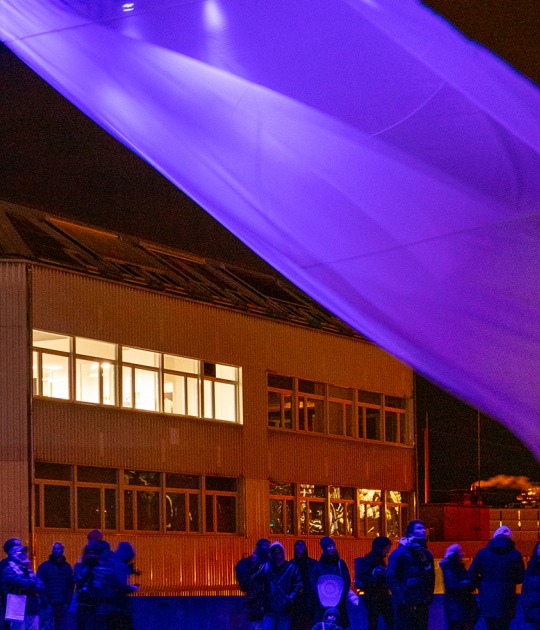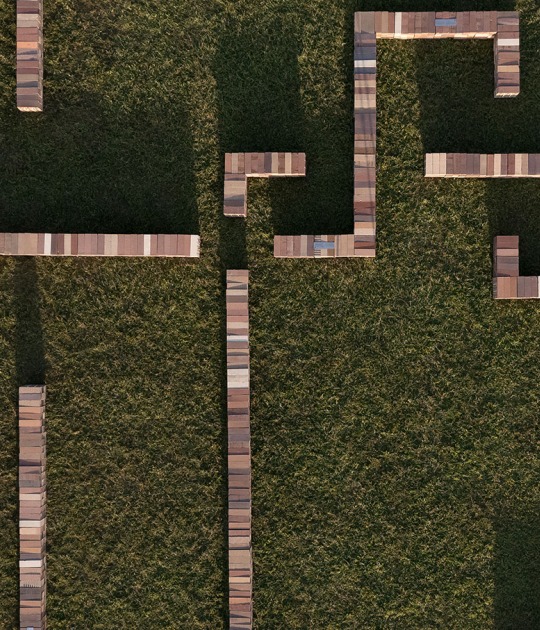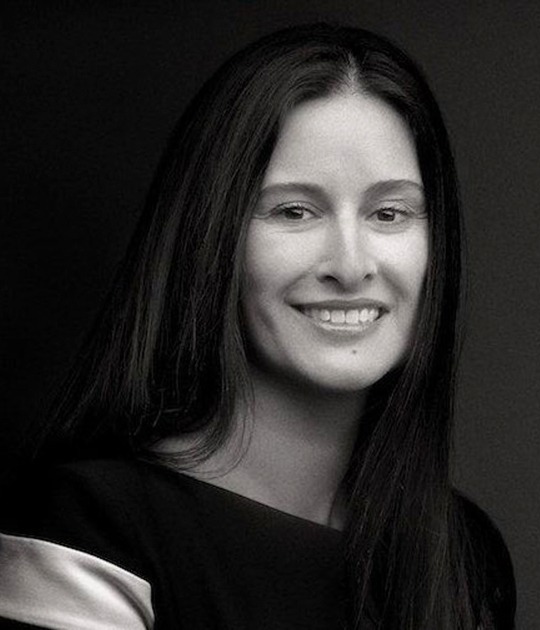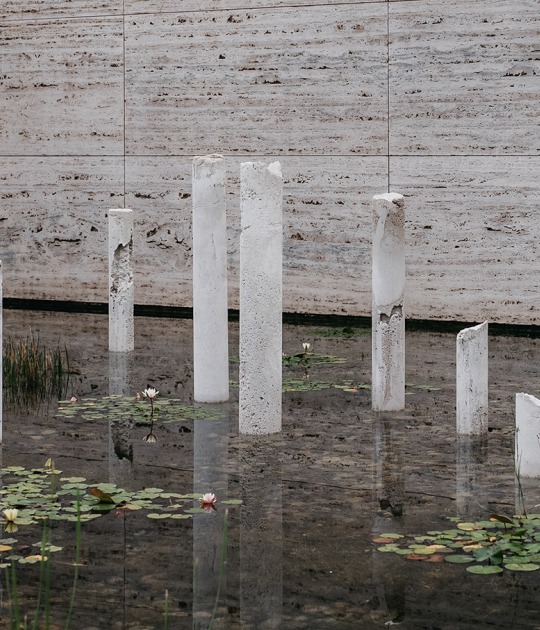Relying on new technological opportunities as a means - not goal - to attain this overall design, they present a bold installation: the MAXXI Temporary School by Parasite 2.0, a project in collaboration with MoMA/MoMAPS1 of NY, the Constructo association of Santiago de Chile , Istanbul Modern and MMCA Seoul. Through three fun mobile scenarios the learning process is released, embracing the concept of the museum and social interaction in an architectural, theatrical and artistic space of blurry boundaries. A ludic place that merging natural and artificial effects, makes us wonder about the role of architecture and its limits through a deliberate critique of which the space is a living exsample, do you dare to try it?
MAXXI chose MAXXI Temporary School for its capacity to transform the nature of the museum’s openspace through a series of thematic, mobile and accessible installations/sets,dedicated to interacting with life at MAXXI and the events it produces each year for YAP. The project’s characteristics place it at the borders between architecture, set design, art and performance. Its victory was decreed by its playful, welcoming composition, the inclusion in the project important aspects relating to this communication and “social” interaction and lastly its ties with a museum, theatrical and cinematographic construction tradition deeply rooted in the history of Rome.
MAXXI chose MAXXI Temporary School for its capacity to transform the nature of the museum’s openspace through a series of thematic, mobile and accessible installations/sets,dedicated to interacting with life at MAXXI and the events it produces each year for YAP. The project’s characteristics place it at the borders between architecture, set design, art and performance. Its victory was decreed by its playful, welcoming composition, the inclusion in the project important aspects relating to this communication and “social” interaction and lastly its ties with a museum, theatrical and cinematographic construction tradition deeply rooted in the history of Rome.
Description of the project by Parasite 2.0
Since the “Age of Anxiety”, the “Risk Society”, the “New Middle Age” and the more recent “Age of Earthquakes”, today the architect lives in precarious seems he is not even able to understand this condition insofar “ he waits for clients to tell them what urban architectural object, due to the economic condition, has transformed the architect into a competition-machine that only produces numerous projects each year, only without any proactive contribution to the issues that today should be urgently investigated.
Cases like the incredible number of proposals, tell us of the precarious working condition of the architect who wastes his time, money, and physical and mental resources seeking a victory that is, regrettably, mainly determined by the delirious and fetishist technological and formal “hunting.” Today, one of the most common example is the competition for a temporary pavilion.
Cultural institutions, museums and administrations every year invest in the realisation of these ephemeral structures. Most of the times they represent a waste of economical resources for the umpteenth new aesthetics of an Serpentine gallery, every year we witness the realisation of iconic objects, sanctuaries of the architect itself that designed them. These buildings talk about nothing. They only represent the design idea of the architect, without contributing in any way to the practice from the ethical, social and political point of view. The 2015 Serpentine Gallery pavilion takes to the extreme level this concept becoming “the most instagram-friendly” Architecture in which the only task of the architect is to create the most unique and upsetting scenography.
First of all the project wants to be a producer of contents and research, with the physical installation as a background, in order to reach transform the public square of the museum both into a “temporary school” and in a place for just staying. The pavilion is seen just as the infrastructure/support and not as the most important part of the intervention.
We consider the museum as the place in which we can learn, as a pedagogical tool, as a public school for the city. Starting from the main theme of the environmental sustainability, the project will be developed over four months of cultural program, conferences, projections and foreign personalities and excellencies.
The museum is a school questions the modalities with which today the man and the architect should modify their approach in relation with the acknowledgment of the Anthropocene and with “unique opportunity to revaluate the terms of theory and practice which have been inherited from modernity.” Being aware of living into the era of the ultimate human impact on the earth, brings us to consider the issue of sustainability in a more radical and broader way, thus re-considering the modalities of intervention.
The pavilion follows the concept of being a simple scenography, a background a cluster of green elements, that together compose a huge greenscreen installation, and a mobile app, museum, people will able to overlap those elements with pictures of uncontaminated natural environments, Anthropocene age: the disappearance of the boundary the pure nature, reaching a new total hybridisation.
Through the use of simple structures (movable thanks to the presence of wheels underneath them) on which the scenery silhouettes are installed together with all the technical parts (video, sound, lights...) useful for the functioning of the same structures, the pavilions will allow the Museum to organise them in different layouts. These big scenery silhouettes will bring the exterior plaza to life, making it liveable and enjoyable. live They will represent a series of iconic images belonging to our present and future extreme environmental and climatic condition.
Cases like the incredible number of proposals, tell us of the precarious working condition of the architect who wastes his time, money, and physical and mental resources seeking a victory that is, regrettably, mainly determined by the delirious and fetishist technological and formal “hunting.” Today, one of the most common example is the competition for a temporary pavilion.
Cultural institutions, museums and administrations every year invest in the realisation of these ephemeral structures. Most of the times they represent a waste of economical resources for the umpteenth new aesthetics of an Serpentine gallery, every year we witness the realisation of iconic objects, sanctuaries of the architect itself that designed them. These buildings talk about nothing. They only represent the design idea of the architect, without contributing in any way to the practice from the ethical, social and political point of view. The 2015 Serpentine Gallery pavilion takes to the extreme level this concept becoming “the most instagram-friendly” Architecture in which the only task of the architect is to create the most unique and upsetting scenography.
First of all the project wants to be a producer of contents and research, with the physical installation as a background, in order to reach transform the public square of the museum both into a “temporary school” and in a place for just staying. The pavilion is seen just as the infrastructure/support and not as the most important part of the intervention.
We consider the museum as the place in which we can learn, as a pedagogical tool, as a public school for the city. Starting from the main theme of the environmental sustainability, the project will be developed over four months of cultural program, conferences, projections and foreign personalities and excellencies.
The museum is a school questions the modalities with which today the man and the architect should modify their approach in relation with the acknowledgment of the Anthropocene and with “unique opportunity to revaluate the terms of theory and practice which have been inherited from modernity.” Being aware of living into the era of the ultimate human impact on the earth, brings us to consider the issue of sustainability in a more radical and broader way, thus re-considering the modalities of intervention.
The pavilion follows the concept of being a simple scenography, a background a cluster of green elements, that together compose a huge greenscreen installation, and a mobile app, museum, people will able to overlap those elements with pictures of uncontaminated natural environments, Anthropocene age: the disappearance of the boundary the pure nature, reaching a new total hybridisation.
Through the use of simple structures (movable thanks to the presence of wheels underneath them) on which the scenery silhouettes are installed together with all the technical parts (video, sound, lights...) useful for the functioning of the same structures, the pavilions will allow the Museum to organise them in different layouts. These big scenery silhouettes will bring the exterior plaza to life, making it liveable and enjoyable. live They will represent a series of iconic images belonging to our present and future extreme environmental and climatic condition.

























